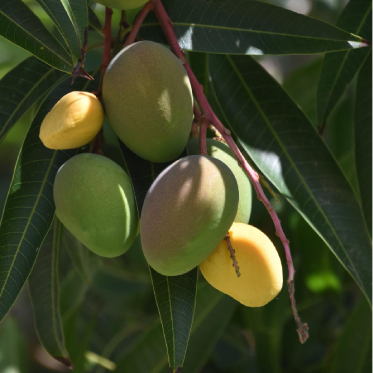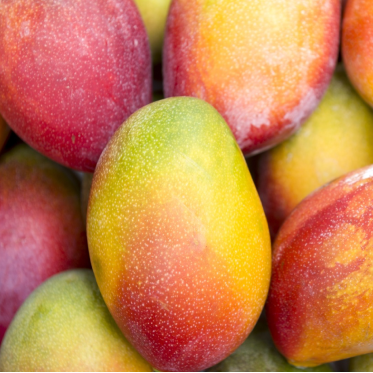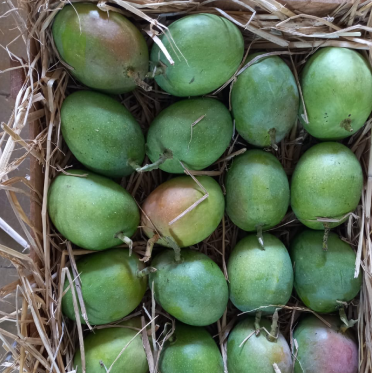The Ratnagiri Alphonso mango is renowned for its quality and unique taste, making proper sorting, grading, treatment, and storage essential to maintain its premium status. Here’s a comprehensive guide:
- Sorting
Sorting ensures that defective or unripe mangoes are separated from the high-quality ones.
Steps:
- Initial Sorting:
- Remove mangoes that are damaged, bruised, overripe, underdeveloped, or affected by pests.
- Manual Sorting:
- Workers visually inspect mangoes for size, shape, and color.
- Mechanical Sorting (Optional):
- Advanced sorting machines can sort mangoes based on size, color, and weight.
- Grading
Grading categorizes mangoes into uniform quality groups for consistent market presentation and pricing.
Grading Parameters:
- Size:
- Mangoes are graded by weight (e.g., 150–200g, 200–250g, 250–300g).
- Color:
- Mature mangoes with a bright yellow color and slight blush are graded higher.
- Shape:
- Uniform, oval-shaped fruits are preferred over irregularly shaped ones.
- Defects:
- Free from blemishes, scratches, or other surface damage.
Grading Standards:
- Grade A (Premium): Uniform size, excellent color, no defects, used for export.
- Grade B: Slightly smaller or with minor defects, used for local markets.
- Grade C: Lower quality, often processed into pulp or other by-products.
- Treatment
Proper post-harvest treatment ensures that the mangoes stay fresh, safe, and pest-free for domestic and international markets.
Common Treatments:
- Cleaning and Washing:
- Mangoes are washed in clean, chlorinated water (100–150 ppm) to remove dirt, sap, and contaminants.
- Hot Water Treatment (HWT):
- Dipping mangoes in hot water (48–55°C for 15–30 minutes) to eliminate pests like fruit flies and prevent fungal infections.
- Essential for exports to countries like the USA and Japan.
- Vapour Heat Treatment (VHT):
- Exposure to warm, humid air to kill pests without affecting fruit quality.
- Wax Coating:
- A thin layer of edible wax is applied to reduce moisture loss, enhance shine, and extend shelf life.
- Ripening Treatment:
- Ethylene gas (100–150 ppm) is used for uniform ripening under controlled conditions (20–25°C, 85–90% humidity).
- Avoid using calcium carbide, as it is banned in many countries.
- Irradiation (for Export):
- Mangoes destined for certain markets, like the USA, undergo irradiation to meet phytosanitary standards.
- Storage
Proper storage minimizes spoilage and ensures mangoes retain their quality until they reach consumers.
Optimal Storage Conditions:
- Temperature:
- Mature-green mangoes: 13–15°C.
- Ripe mangoes: 10–12°C.
- Overripe mangoes: Avoid refrigeration to prevent chilling injury.
- Humidity:
- 85–90% relative humidity to prevent shriveling.
- Ventilation:
- Proper airflow in storage rooms to prevent heat buildup.
Storage Duration:
- Green Mangoes: 2–3 weeks at optimal temperature.
- Ripened Mangoes: 5–7 days under refrigeration.
Cold Chain Maintenance:
- During transportation, mangoes must be kept in refrigerated trucks with consistent temperature control.
Packaging for Storage:
- Use corrugated fiberboard cartons with ventilation holes.
- Cushioning materials like paper shreds or foam nets to prevent bruising.
Best Practices for Ratnagiri Alphonso Mango Handling:
- Avoid Overloading:
- Overloading cartons or crates can cause bruising and damage.
- First-In, First-Out (FIFO):
- Use older stock first to minimize spoilage.
- Monitor Ethylene Exposure:
- Store green mangoes away from ripening fruits to delay premature ripening.
By following these sorting, grading, treatment, and storage practices, the Ratnagiri Alphonso mangoes can maintain their exceptional quality for both domestic and international markets.












